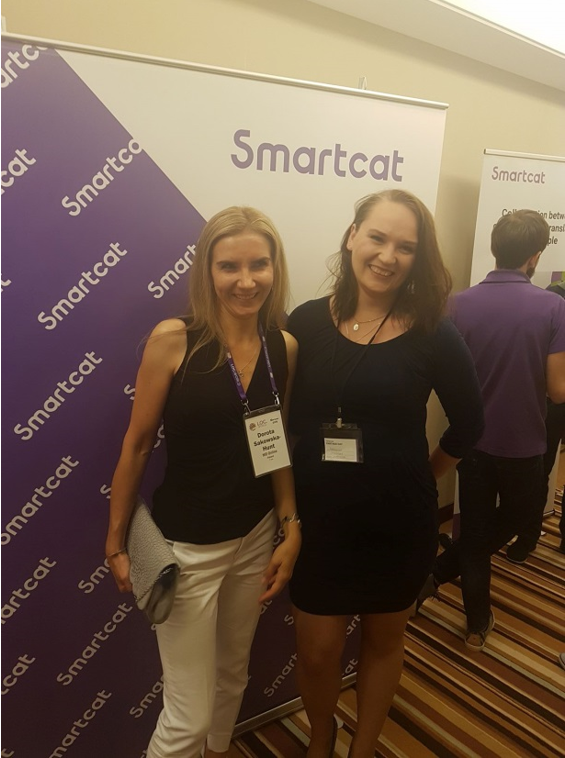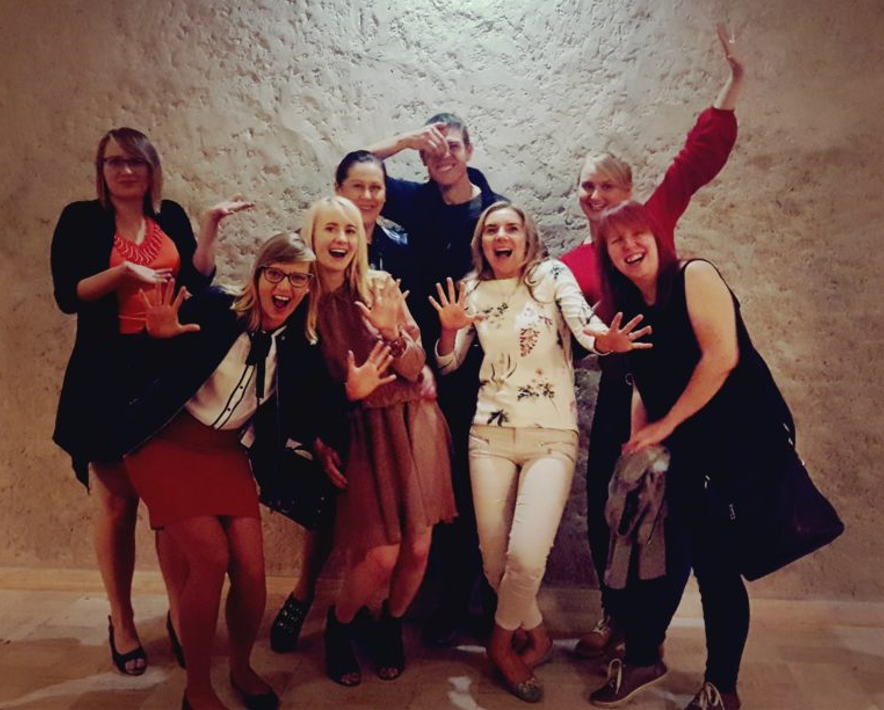Year 6: CATs and Foxes
2018 was a real deal breaker for us in taming CATs J. Computer Assisted Translation (CAT) tools are software that aid linguists in the production of language translation. We learned our first CAT tool during 2017 at the ATC conference in London. In 2018, equipped with knowledge with the partnership with SmartCat we were ready to introduce this economic and user friendly CAT to the Polish market. We presented talks on LocWorld and Konferencja Tłumaczy.

Dorota and Magda at conference
At the time (and to a certain extent today) it provided optimum efficiency, pace, unification, all you can dream of. However…cats might not understand foxes…let me tell you the story of our biggest most upsetting business failure.
We started working with a prestigious client, with daily demanding job – not a barrier for us! It involved working with linguists around the world, including in Australia, 4 AM, no problem! With the help of CAT tools and merging texts from different translators. We felt like we really understood the business, we got there, all those years of work were starting to pay off.
And then we got worrying news! Our client stopped ordering with immediate effect. We tried to understand, we were so sure of our work and its impeccable quality of the text which was translated into English. It was all to do with “Fox”. Well, it was a story about a famous Polish journalist whose name is Lis which literally translates into…fox. The thing is one of our translators made the cardinal mistake of translating a name as suggested by the CAT tool. The translator was not living in Poland, but far away in Australia; the translator simply had never heard about the journalist and misunderstood the slogan as relating to a animal not a man…
What can I say, we tried our excuses – nothing helped. Despite that situation we strongly believed in all advantages that CAT tools give so we were keen to keep going that direction. That year our team was joined by Milena. Milena is our back office senior manager dealing with CATs and translators all around the world. If you want to find out how we got to the idea for a “back office” and how we manage over several hundred linguists globally keep reading about 2019!
Memories of Milena
I started my adventure with MD Online in the summer of 2018. It was my first fully remote job, and contrary to popular belief, working from home turned out to be quite a revolution for me. Before, I had a clear boundary set between work and my private life, and suddenly that line began to blur, and I had to learn how to work from home with people I barely see, and with my family bustling around in the next room. It was quite amusing, but creating a new work-life balance, with an office in my home but at the same time not turning my home into an office, took me a while to figure out 😉
This was my own private revolution, but changes were also happening within the company. When I started working at MD, there was no clear division between the front and the back office. The girls supervised the entire process, from contacting the client and preparing the quote, assigning the job to the appropriate translators, to quality control. I was the first employee assigned specifically to the back office and only dealt with translators. The clearer division between the front and the back office began to take shape at our annual meeting in 2018, and it fully came into effect a year later.

Our annual team meeting (2018) at Irena Eris Hotel
We cooperate with translators from all over the world, and at first, remembering all of them was quite a challenge. However, now I can confidently say that I know our translators (and there are several hundred of them!) better than anyone else. I memorized their names, rates, specializations, languages they work in, and their history of ups and downs because we have been through a lot together over these five years. For some of them, I could even recall certain events from their personal lives because we have grown close enough that they want to share them with me, but that stays between us 😉
The division into the front and the back office also initiated changes in quality control. Thanks to this division, we could dedicate more time to checking the translated files. We introduced additional in-house checks and a QA system. Over time, people whose duties focused solely on quality control also started to work in our company. One of them is still with us and has been dutifully supporting me in all of the back office duties, not just in checking files.
During these five years, another change took place in the company that personally makes me the happiest, namely the continuous development of CAT tools. Computer-assisted translation has interested me since my college days, so I observed this change with great joy. When I started working, projects were mainly carried out on files, and CAT translations were sporadic. Now, the vast majority of our projects is carried out in CAT tools such as SmartCAT, MemoQ, SDL Trados, Memsource, or XTM. This is not only a huge improvement in translation and quality control, but also a real joy for my translation-technology-oriented soul 😉 I can’t wait to see what happens next 🙂

Leave a Reply